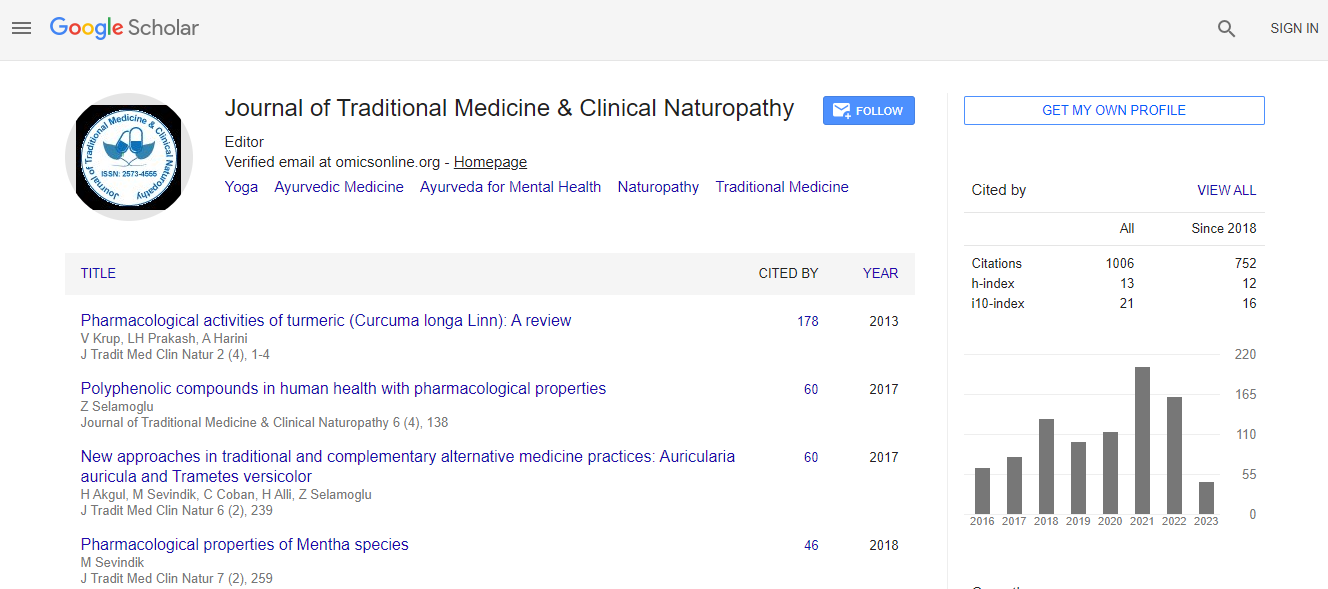Research Article
Bioactivity Guided Fractionation of the Aqueous Extract of the Indian Banyan and Evaluation of Immunomodulatory Activity - Validating the Traditional Use
| Tabassum Khan1*, Pratima Tatke2 and Satish Gabhe3 | |
| 1SVKM’s Dr. Bhanuben Nanavati College of Pharmacy, Mumbai, India | |
| 2C.U.Shah College of Pharmacy, SNDT Women’s University, Mumbai, India | |
| 3Bharti Vidyapeeth, Pune University, Pune, India | |
| Corresponding Author : | Tabassum Khan Assistant Professor, SVKM’s Dr. Bhanuben Nanavati College of Pharmacy Gate No-1, Mithibai College Campus, First Floor V.M.Road, Vile Parle (W), Mumbai- 400 056, India Tel: 91-22-26134557, 91-22-26134558 Fax: 91-22-26132905 E-mail: tabassum.khan@bncp.ac.in |
| Received May 02, 2014; Accepted June 15, 2014; Published June 17, 2014 | |
| Citation: Tabassum K, Pratima T, Satish G (2014) Bioactivity Guided Fractionation of the Aqueous Extract of the Indian Banyan and Evaluation of Immunomodulatory Activity - Validating the Traditional Use. J Homeop Ayurv Med 3:158. doi: 10.4172/2167-1206.1000158 | |
| Copyright: © 2014 Tabassum K, et al. This is an open-access article distributed under the terms of the Creative Commons Attribution License, which permits unrestricted use, distribution, and reproduction in any medium, provided the original author and source are credited. | |
Abstract
The Indian Banyan is a large tree, bearing many aerial roots. An aqueous decoction of the fresh aerial roots of this tree has been used by traditional ayurvedic medical practitioners to boost the immune system in various diseases. In AIDS, death occurs eventually due to the failing immune system hence new therapies directed towards augmenting the functional capacity of the immune system are the need of the hour. Studies carried out in our laboratory have indicated the immunostimulant activity of the methanol and aqueous extracts of the aerial roots. The aqueous extract was found to enhance the cell mediated and antibody mediated immune responses in rats. The aqueous extract was subjected to fractionation using solvents of varying polarity. This process generated four fractions namely chloroform fraction, ethyl acetate fraction, n-butanol fraction and the aqueous fraction. These fractions were screened for immunomodulatory activity using the in vitro lymphocyte proliferation assay in an effort to identify the most bioactive fraction. The results of this assay indicated that the aqueous fraction exhibited maximum immunostimulatory activity (80% stimulation of lymphocytes at 1 μg/ml) while the other three fractions did not exhibit stimulation of lymphocytes at the concentrations tested (0.001- 10 μg/ml). Hence the aqueous fraction was taken up for evaluation of in vivo immunomodulatory activity. The aqueous fraction was evaluated at doses ranging from 25 mg/kg to 200 mg/kg body weight in rats using the hypersensitivity reaction assay and the hemagglutination reaction assay. The maximum response was observed at 50 mg/kg. The aqueous fraction of the aqueous extract exhibited significant stimulation of cell mediated and antibody mediated immunity and could prove beneficial in diseases involving suppression of the immune system like AIDS.

 Spanish
Spanish  Chinese
Chinese  Russian
Russian  German
German  French
French  Japanese
Japanese  Portuguese
Portuguese  Hindi
Hindi 
